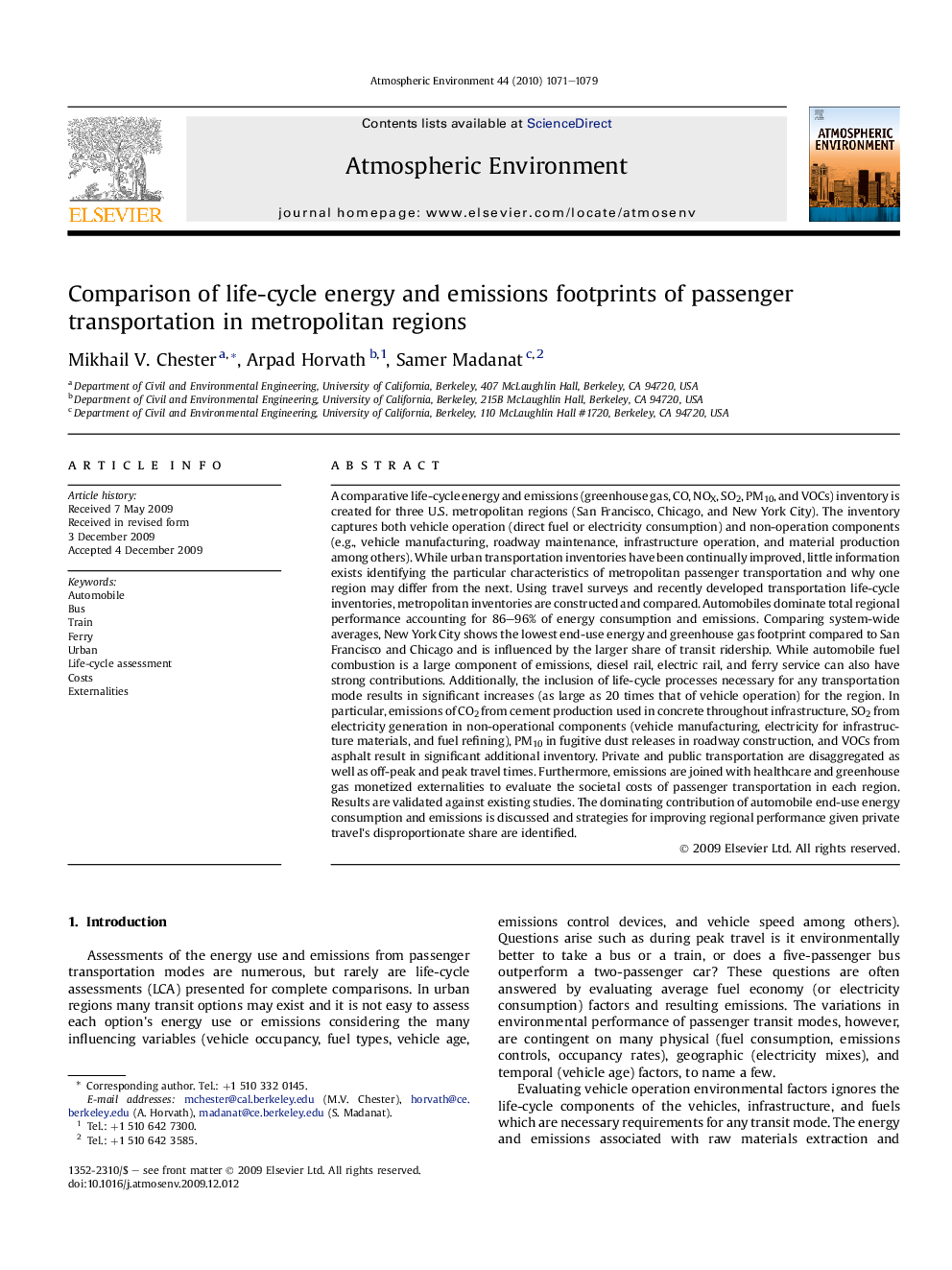| کد مقاله | کد نشریه | سال انتشار | مقاله انگلیسی | نسخه تمام متن |
|---|---|---|---|---|
| 4440957 | 1311085 | 2010 | 9 صفحه PDF | دانلود رایگان |

A comparative life-cycle energy and emissions (greenhouse gas, CO, NOX, SO2, PM10, and VOCs) inventory is created for three U.S. metropolitan regions (San Francisco, Chicago, and New York City). The inventory captures both vehicle operation (direct fuel or electricity consumption) and non-operation components (e.g., vehicle manufacturing, roadway maintenance, infrastructure operation, and material production among others). While urban transportation inventories have been continually improved, little information exists identifying the particular characteristics of metropolitan passenger transportation and why one region may differ from the next. Using travel surveys and recently developed transportation life-cycle inventories, metropolitan inventories are constructed and compared. Automobiles dominate total regional performance accounting for 86–96% of energy consumption and emissions. Comparing system-wide averages, New York City shows the lowest end-use energy and greenhouse gas footprint compared to San Francisco and Chicago and is influenced by the larger share of transit ridership. While automobile fuel combustion is a large component of emissions, diesel rail, electric rail, and ferry service can also have strong contributions. Additionally, the inclusion of life-cycle processes necessary for any transportation mode results in significant increases (as large as 20 times that of vehicle operation) for the region. In particular, emissions of CO2 from cement production used in concrete throughout infrastructure, SO2 from electricity generation in non-operational components (vehicle manufacturing, electricity for infrastructure materials, and fuel refining), PM10 in fugitive dust releases in roadway construction, and VOCs from asphalt result in significant additional inventory. Private and public transportation are disaggregated as well as off-peak and peak travel times. Furthermore, emissions are joined with healthcare and greenhouse gas monetized externalities to evaluate the societal costs of passenger transportation in each region. Results are validated against existing studies. The dominating contribution of automobile end-use energy consumption and emissions is discussed and strategies for improving regional performance given private travel's disproportionate share are identified.
Journal: Atmospheric Environment - Volume 44, Issue 8, March 2010, Pages 1071–1079